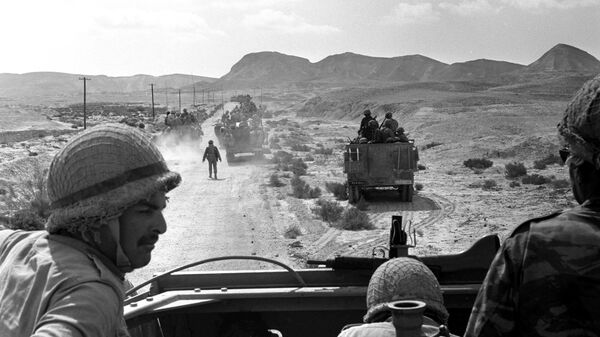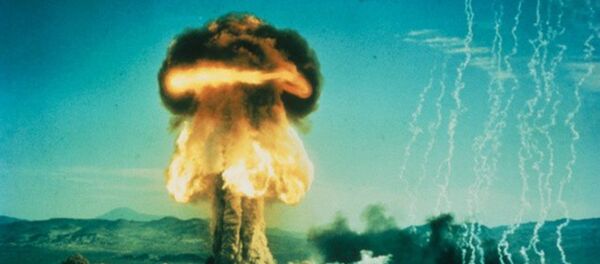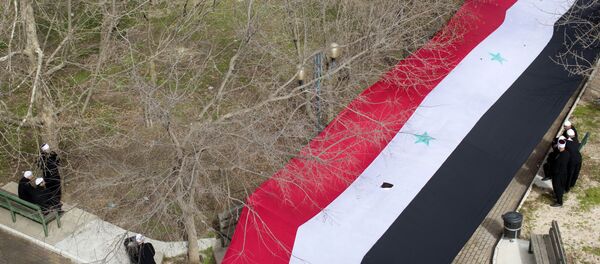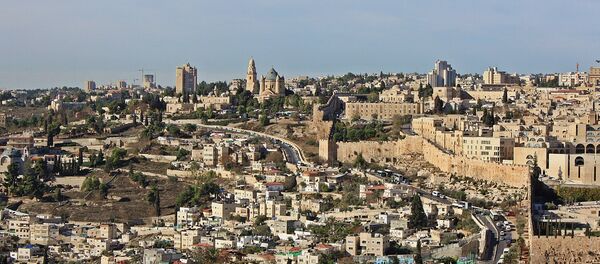On June 5, 1967, following months of rising tensions between Tel Aviv and its Arab neighbors, the Israeli Air Force launched a preemptive attack against the Egyptian Air Force, at the time considered to be among the most powerful in the region, and successfully gained total air superiority. In the six days that followed, Israeli air power, tanks, and airborne troops attacked a numerically superior foe across multiple fronts, decimating the armies of Egypt, Syria and Jordan, and ending in a bitter peace on Israeli terms.
The political, ideological or even moral considerations of the war notwithstanding, Russian military historian and journalist Sergei Varshavchik explained that in military terms, the Israeli armed forces' campaign has long become a textbook case in the skillful use of limited forces against a superior foe.
Recounting the most significant moments from the war in an article for RIA Novosti, Varshavchik recalled how, on the morning of June 5, 1967, 183 IAF aircraft, including Sud Aviation Vautour IIs, Dassault Mirage IIIs, Dassault Mystere IVs and Dassault Super Mysteres, launched a massed attack on 11 Egyptian air bases, equipped with some of the latest Soviet planes.
"In a little more than an hour, nearly 200 aircraft were destroyed, most of them not even having had the time to get off the ground. Quickly refueling, Israeli pilots returned and attacked Egyptian airfields again, including three which had not been hit in the first raid. Over 100 more Egyptian Air Force planes were burned on the ground in the second raid."
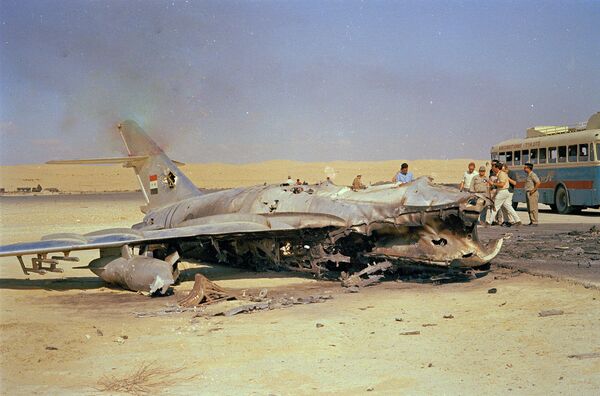
"Syrian and Jordanian air power attempted a counterattack. The response came with lightening speed; following attacks on these countries air bases, the entire Jordanian Air Force and about half of the Syrian Air Force were put out of action."
In other words, "on the first day of the war, the IAF achieved total air superiority, ensuring the freedom of maneuver for their ground forces," Varshavchik wrote.
In May 1967, following reports of Israeli preparations for war, on Nasser's request, Indian and Yugoslav peacekeepers left the Egyptian-Israeli border; Cairo then moved to close the straits of Tiran to Israeli vessels – something Tel Aviv warned it would consider to be a casus belli. The same month, King Hussein of Jordan signed a defense pact with Cairo, and Amman signed a similar pact with Iraq.
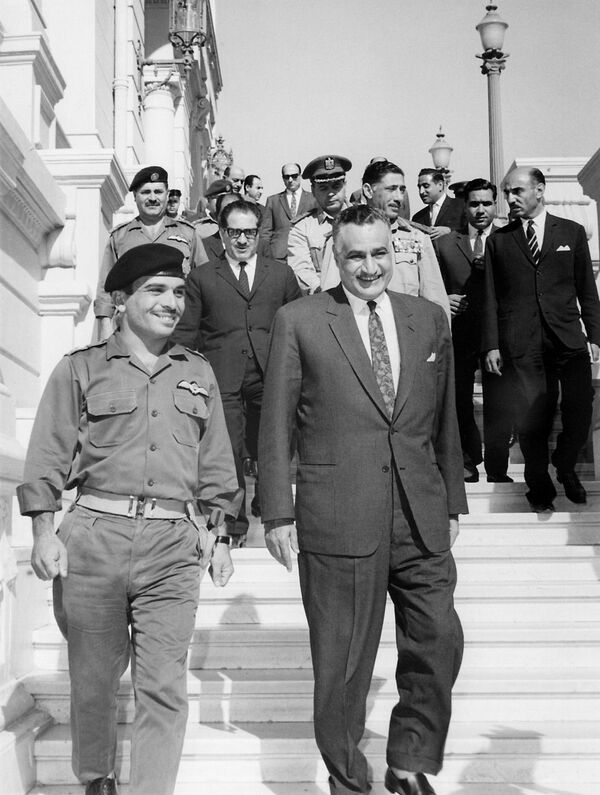
In other words, Varshavchik recalled that by early June 1967, Israel was surrounded by the military forces of hostile Arab states. From the west and south, over 900 tanks and over 100,000 Egyptian troops were concentrated in the Sinai Peninsula; in the north, 300 Syrian tanks and six infantry divisions were deployed; from the east, Israel faced 270 tanks and seven Jordanian and Iraqi brigades.
Other Arab states, from Algeria to Kuwait and Saudi Arabia, also signaled a willingness to send troops if necessary.
"The Arabs had the clear numerical advantage," the journalist wrote. "Their ground forces exceeded 500,000 troops and officers (against 264,000 for the Israelis) and over 2,000 tanks (against 800 Israeli tanks), and almost 1,000 combat aircraft (against 300 planes in the Israeli Air Force)."
Accordingly, Israeli military planners began preparations for this eventuality ahead of time, the journalist added. "Starting in 1965, the IDF began preparations for a preemptive strike against their enemies. Israeli reconnaissance pinpointed future targets, researched the passability of roads for tanks in the Sinai Peninsula, the defensive positions in the Golan Heights, the location of enemy artillery and anti-aircraft batteries, command and control posts, weapons warehouses and water wells."
"Through numerous drills, Israeli troops perfected the skill of attacking fortified areas, overcoming minefields, the rapid transfer of artillery fire from advance targets deep into enemy positions," etc.
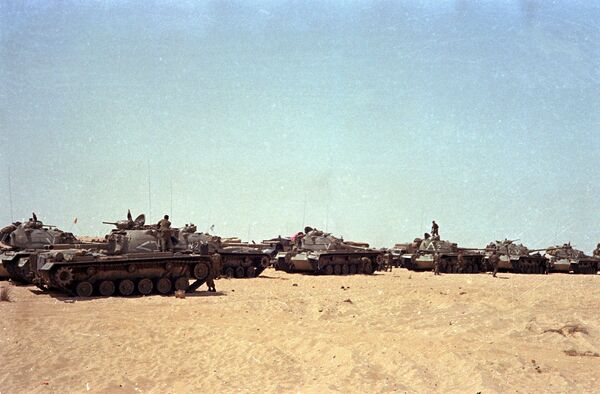
"Tank crew were required to keep the required pace of movement, confidently suppressing enemy resistance with their guns and caterpillar tracks. Paratroopers were trained to disembark quickly in enemy territory, destroying enemy forces and entrenching until the arrival of the main forces."
"Israeli Air Force Commander Mordechai Hod trained his pilots to fly in complete radio silence over the sea at low altitudes, and to carry out low altitude precision strikes against enemy airfields in Egypt and Syria, detailed models of which were built in the Israeli desert."
On the morning of June 5, 1967, when the war began, the IAF launched Operation Moked ('Focus'). "They flew their planes along the usual route over the Mediterranean. But this time, instead of turning to the Negev Desert, they turned around, and at an altitude of 30 meters, in conditions of complete radio silence, rushed to attack Egyptian airfields. Egyptian air defenses were powerless."
The same morning, three IDF divisions attacked the Egyptian Army in the Sinai Peninsula, overcoming numerous fortified positions according to the tactics in which they had been trained.
It was in the Sinai that Major-General Ariel Sharon, the future Israeli prime minister, would defeat Egyptian forces in the Battle of Abu-Ageila, a key encounter which would prove critical to Egypt's loss of the entire Sinai Peninsula to Israeli forces. Concentrating artillery on Egyptian emplacements, Sharon sent two tank groups to surround the Egyptians in a pincer, depriving them of the opportunity to send in reinforcements. An Israeli airborne battalion was landed in the area, neutralizing enemy guns, after which Israeli infantry began an assault on enemy trenches.
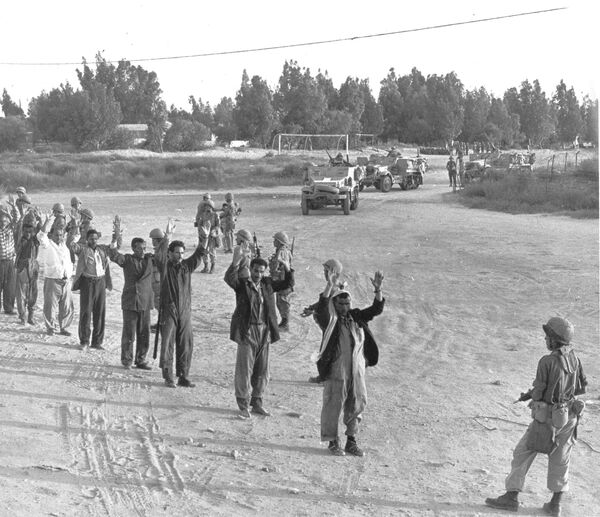
Varshavchik wrote that "in three days of fighting, Egyptian defenses in the Sinai collapsed, and they began a disorderly retreat from the peninsula into the interior of the country. IAF aircraft, including helicopters, added to the chaos, regularly subjecting retreating Egyptian forces to bombing and shelling."
"The first four days of the war were fought using artillery. On June 9, Israeli forces…broke through the Syrian defenses, and cleared the plateau of enemy troops the next day."
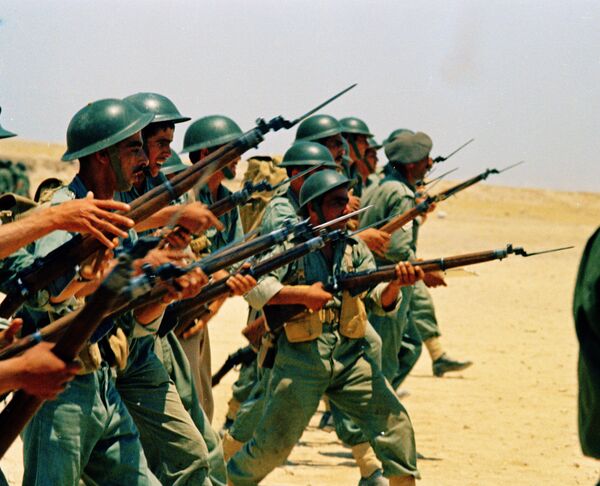
On the Jordanian Front, Israeli and Arab troops fought in an urban environment, including the city of Jerusalem. Varshavchik wrote that "the distinctive feature of these actions was that the battles were fought in urban conditions, factually devolving into many smaller battles. The Jordanians resisted fiercely, stopping the Israeli advance on Jerusalem's Old City, but on June 6, Israeli tank units surrounded East Jerusalem," – home to the major holy sites of the monotheistic religions of the world.
Ultimately, the journalist noted that "as a result of this short-lived campaign, Israel would not only defeat all its opponents, but also capture territory more than three and a half times that of its pre-war size. The Six-Day War, featuring all branches of the military, once again demonstrated the importance of air superiority for a successful offensive by tank and airborne units. The experience gained by the IAF against enemy air defenses [in particular] would be used in other, later conflicts."
"Lessons were also learned by anti-aircraft gunners. Specifically, between the late 1960s and early 1970s in the Vietnam War, Soviet and North Vietnamese air defense forces upgraded their tactics in combating American aviation, while more advanced munitions were delivered into the arsenals of anti-aircraft missile forces. All this cost the US Air Force, which lost over 10,000 airplanes and helicopters, a heavy toll, preventing the US from achieving its goals in the war," Varshavchik concluded.
